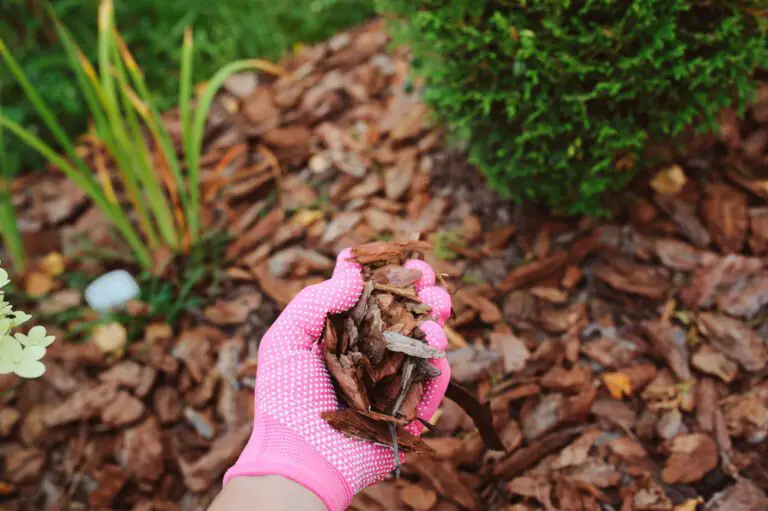Rosemary Indoors: Tips for Thriving Herbal Growth
Table of Contents
Rosemary Indoors Growing Conditions
Rosemary Indoors is a versatile herb that thrives in warm climates with well-draining soil, such as sandy or loamy types. It prefers a pH level between 6.0 and 7.0 for optimal growth. Providing ample sunlight is essential, as rosemary requires at least 6-8 hours of sunlight daily to flourish indoors.
When it comes to indoor rosemary cultivation, maintaining a consistent watering schedule is key. Allow the soil to dry out slightly between waterings to prevent root rot. To check if it’s time to water, insert your finger into the soil – if it feels dry up to your first knuckle, it’s time to water your rosemary.

Choosing the Right Container
When selecting a container for growing rosemary indoors, it is essential to choose a pot that provides adequate space for root development. Opt for a container that is at least 12 inches in diameter and has drainage holes at the bottom to prevent waterlogging, which can lead to root rot. Additionally, porous materials like terracotta or ceramic pots are ideal as they allow for better aeration and moisture regulation within the soil.
Consider the weight of the container when choosing one for your indoor rosemary plant. Keep in mind that once the plant is potted, it will become heavier, so select a container that is sturdy and will not tip over easily. Also, ensure the chosen pot complements the aesthetic of your indoor space and matches the size of the rosemary plant to create a visually appealing arrangement.

Sunlight Requirements
Rosemary plants thrive in full sunlight, requiring at least six to eight hours of direct sunlight per day to grow vigorously. Placing your container near a sunny window or under a grow light will ensure your rosemary receives the necessary light it needs for healthy growth and optimal flavor development.
Insufficient sunlight can lead to leggy growth and decreased flavor intensity in your rosemary plant. If natural light is limited, supplementing with a grow light positioned about 6 to 12 inches above the plant can help maintain its growth and aroma. Remember, adequate sunlight is essential for your indoor rosemary to flourish and provide you with a bountiful harvest of aromatic leaves for culinary delights.
Here are the sunlight requirements for indoor rosemary:
| Requirement | Details |
| Sunlight | Rosemary prefers full sun and does not tolerate shade. It requires at least six hours of direct sunlight on most days. A south-facing window is ideal for indoor growth. If you can’t provide enough natural sunlight, consider using grow lights to supplement the light. |
Watering Schedule
To determine the appropriate watering schedule for your indoor rosemary plant, it is essential to consider both the plant’s specific needs and the conditions in which it is growing. Rosemary prefers to be on the drier side, so it is crucial not to overwater, as this can lead to root rot. A good rule of thumb is to let the top inch of soil dry out between waterings. This can vary depending on factors such as the size of the container, the temperature and humidity levels in your home, and the season.
Here’s a tabular summary of the watering schedule for indoor rosemary plants:
| Condition | Watering Frequency |
| Colder Homes with Low Light Levels | Approximately 1-2 times per week. |
| Warm Homes with Dry Air | Every 2-3 days (although this is uncommon). |
Remember that maintaining the right balance is crucial for your indoor rosemary’s health. Allow the soil to dry out between waterings to avoid root rot and other issues.
When it comes to watering your indoor rosemary plant, it is advisable to water thoroughly yet infrequently. Make sure to water at the base of the plant to avoid getting the foliage wet, as this can make the plant susceptible to fungal diseases. Using a pot with drainage holes is also important to prevent water from pooling at the bottom, which can lead to root problems. Remember, it is always better to underwater than overwater, as rosemary is more tolerant of dry conditions than soggy soil. By being attentive to your plant’s watering needs and observing how it responds, you can establish a suitable watering routine to promote healthy growth and vitality.

Soil Type and pH Levels
When cultivating rosemary indoors, it’s crucial to select the right soil type and maintain appropriate pH levels for optimal growth. Rosemary thrives in well-draining soil, such as a mix of sandy and loamy soil with good aeration. A pH level between 6.0 and 7.0 is ideal for rosemary, as it helps the plant absorb essential nutrients effectively from the soil.
To ensure the success of your indoor rosemary garden, consider using a soil pH testing kit to monitor and adjust the pH level as needed. Adding organic matter like compost can help improve soil structure and fertility, creating a conducive environment for rosemary to flourish. Remember, maintaining the correct soil type and pH levels is fundamental in promoting healthy growth and robust aromatic foliage in your indoor rosemary plants.
When it comes to growing indoor rosemary plants, the right soil type and pH levels are crucial for their health and growth. Here’s a summary in tabular form:
| Criteria | Ideal Soil Type for Indoor Rosemary | Preferred pH Range |
| Drainage | Well-draining, sandy or loamy soil that doesn’t hold onto moisture for too long. | 6.0 to 7.0 (slightly acidic to neutral) |
| Soil Structure | Aerated soil structure that allows for efficient root respiration (rosemary dislikes compacted soil). | |
| Fertility | Medium to low fertility soil. | |
| Inorganic Matter | Soil high in inorganic matter (similar to the sandy, gritty soils of its native Mediterranean environment). |
Fertilizing Needs
When it comes to fertilizing your indoor rosemary plant, it is important to provide it with the nutrients it needs to thrive. Choose a balanced fertilizer specifically formulated for herbs or one with a higher nitrogen content to promote healthy leaf growth. During the growing season, fertilize your rosemary plant every 4-6 weeks, following the instructions on the label for proper dilution and application.
Avoid over-fertilizing your rosemary plant, as this can lead to nutrient imbalances and potentially harm the plant. Signs of over-fertilization include yellowing leaves, stunted growth, and leaf burn. If you notice any of these symptoms, flush the soil with water to help remove excess salts and adjust your fertilizing schedule accordingly to prevent further damage to your rosemary plant.
Here’s a summary of the fertilizing needs for indoor rosemary:
| Aspect | Details |
| Fertilizer Type | Use a liquid fertilizer (organic or synthetic). Compost can also be beneficial. |
| Fertilizing Schedule | Start in spring (beginning of growing season). Continue monthly through fall. |
| Light Requirements | Provide at least 6 hours of full sunlight per day. Consider artificial LED lighting. |
Pruning and Harvesting Techniques
Pruning is a vital practice in maintaining the health and vigor of your rosemary plant. Regularly trimming back the top growth helps to promote bushier growth and prevents the plant from becoming leggy. Use sharp, clean pruning shears to snip off the stems just above a set of leaves to encourage new growth. Avoid cutting into old wood as it may harm the plant’s overall health.
When it comes to harvesting rosemary, it’s best to pluck the leaves as needed rather than taking large quantities all at once. This practice allows the plant to continue growing and producing fresh leaves for your culinary use. Harvesting in the morning when the aromatic oils are most concentrated can result in the best flavor for your dishes. Simply pinch off the leaves or snip them with scissors close to the stem for immediate use in your recipes.
Pest Prevention
To prevent pests from infesting your indoor rosemary plants, it’s essential to adopt proactive measures. Implementing a regular inspection routine is crucial for early detection of any potential pest issues. Keep an eye out for common offenders such as spider mites, aphids, and whiteflies, which are known to target rosemary. By catching infestations early on, you can effectively manage and control the problem before it escalates.
In addition to regular monitoring, employing natural pest deterrents can help safeguard your rosemary plants. Consider introducing beneficial insects like ladybugs or lacewings that prey on common pests without causing harm to your plant. Alternatively, you can concoct homemade remedies using ingredients like neem oil or insecticidal soap to repel unwanted visitors. By integrating these eco-friendly solutions into your pest prevention strategy, you can protect your indoor rosemary garden while maintaining a chemical-free environment.
Common Diseases to Watch For
Rosemary is generally a hardy plant with few disease issues, but there are some common ailments to watch out for. One such problem is powdery mildew, a fungal infection that appears as a white powdery coating on the leaves. To prevent this, ensure proper air circulation around your rosemary plants and avoid overhead watering. Root rot is another concern, often caused by overwatering or poorly draining soil. To prevent root rot, allow the soil to dry out between waterings and ensure your containers have adequate drainage holes.
Another disease that can affect rosemary is leaf spot, which presents as dark, water-soaked spots on the foliage. This is typically caused by overhead watering or high humidity levels. To combat leaf spot, water your plants at the base and provide good air circulation. Spider mites may also infest rosemary, causing yellowing leaves and webbing on the plant. Regularly inspect the undersides of the leaves for these tiny pests and treat them promptly to prevent further damage.
Here are some common diseases that can affect indoor rosemary:
| Disease | Description |
| Powdery Mildew | A common fungal disease, especially in indoor rosemary. It appears as a white powdery substance on leaves. |
| Root Rot | Caused by poor soil drainage, leading to rotting of the roots. |
| Blight Infection | A combination of fungal and bacterial infection that kills plant tissues. |
| Leaf Spot | Caused by bacteria or fungi, resulting in spots on the leaves. |
Keep an eye out for these diseases and take necessary steps to prevent or treat them. Proper care, including adequate watering and sufficient light, can help maintain a healthy indoor rosemary plant.
Propagation Methods
Rosemary can be easily propagated through stem cuttings. Select a healthy branch and trim it just below a leaf node. Remove the lower leaves to expose a node on the stem, which is where roots will emerge. Place the cutting in water or a well-draining soil mix, keeping it consistently moist until roots develop.
Another method to propagate rosemary is through layering. Bend a lower branch to the ground and cover a section of it with soil, ensuring it remains in contact with the stem. After roots have formed, separate the new plant from the parent. This technique promotes strong root growth before detachment, increasing the chances of successful establishment.

Companion Planting
When planning your indoor herb garden, companion planting can play a key role in promoting healthy growth and deterring pests. Pairing rosemary with plants like sage, thyme, or oregano can create a harmonious environment where each herb benefits from the presence of the others. These companions not only share similar soil and light requirements but also can help repel pests that might otherwise bother your precious rosemary plants.
Furthermore, planting rosemary alongside lavender or marigolds can enhance the overall aesthetic appeal of your indoor garden. These companion plants not only add a splash of color but also attract beneficial insects like bees and butterflies, which can aid in pollination and contribute to a more vibrant and thriving herb garden ecosystem. By strategically choosing the right companions for your rosemary plant, you can create a diverse and balanced indoor garden that is both visually stunning and functionally beneficial.

Creative Uses for Fresh Rosemary
Fresh rosemary is a versatile herb that can be used in a variety of creative ways beyond just culinary dishes. Its fragrant leaves can be used to infuse syrups and oils, adding a unique flavor profile to cocktails and dressings. Simply steep a few sprigs of fresh rosemary in a simple syrup or olive oil to enhance your favorite recipes with a subtle hint of herbal goodness.
In addition to its culinary applications, fresh rosemary can be used in DIY beauty products and home remedies. Create a fragrant rosemary-infused hair rinse by boiling rosemary leaves in water, then straining the liquid and using it as a final rinse after shampooing. The natural oils in rosemary can help promote healthy hair growth and add shine to lackluster locks. Furthermore, the antimicrobial properties of rosemary make it a great addition to homemade cleaning solutions, providing a fresh and invigorating scent while helping to disinfect surfaces.
Storage and Preservation Tips
Rosemary is a versatile herb that can be easily preserved for future use. One effective method is drying the rosemary sprigs by tying them in small bundles and hanging them upside down in a dark, well-ventilated area. Once completely dried, the leaves can be removed from the stems and stored in an airtight container for up to a year. Another popular preservation technique is infusing rosemary in oil. Simply combine fresh rosemary sprigs with a high-quality oil like olive or grapeseed oil in a sterilized jar, let it sit in a sunny spot for a few weeks, and strain out the herbs before transferring the infused oil to a clean container for storage.

For those looking to prolong the shelf life of rosemary in the refrigerator, wrapping the fresh sprigs in a slightly damp paper towel and placing them in a resealable plastic bag can help keep the herb fresh for up to two weeks. Additionally, freezing rosemary in ice cube trays filled with water or oil is a convenient way to have this herb on hand for cooking throughout the year. Simply pop out a cube when needed and add it directly to your dish for a burst of flavor. Experiment with these different preservation methods to find the one that best suits your needs and enjoy the taste of fresh rosemary in your culinary creations year-round.

Troubleshooting Common Issues
Yellowing leaves on your rosemary plant could indicate overwatering. Ensure that your plant is not sitting in waterlogged soil and adjust your watering schedule accordingly. Wilting leaves may be a sign of underwatering, so check the moisture levels in the soil regularly to prevent dehydration.
If you notice a sticky substance on your rosemary plant, it could be a sign of aphids or other sap-sucking insects. Use a gentle soap solution to rid the plant of these pests, making sure to cover both the tops and bottoms of the leaves. Additionally, browning tips on the leaves may be a result of low humidity levels, so consider placing a small humidifier near your plant to create a more favorable environment.
Celebrating Your Successful Indoor Herb Garden
Once your indoor herb garden has flourished and you are surrounded by the fresh aroma of rosemary, it’s time to celebrate your gardening success. Take a moment to admire the vibrant green hues and the lush foliage that your herbs have grown. Share your accomplishment with friends and family, perhaps by hosting a dinner party featuring dishes infused with your homegrown rosemary.
Consider preserving some of your fresh rosemary through drying or freezing methods so you can continue to enjoy its aromatic flavors even when the growing season has passed. Create homemade herb-infused oils or vinegars as gifts for loved ones, showcasing the versatility and beauty of your indoor herb garden. Reflect on the rewarding journey of nurturing your herbs from seeds or transplants to fully-grown plants, and take pride in the sustainable and flavorful additions they bring to your culinary adventures.
To Know More About Rosemary Indoors Growing, Watch This Video!
Can I grow multiple herbs in the same container?
Yes, you can definitely grow multiple herbs in the same container as long as they have similar growing conditions and watering needs.
How often should I prune my herbs?
It is recommended to prune your herbs regularly to encourage new growth and prevent them from becoming leggy. Pruning can be done as needed, but generally once every few weeks is sufficient.
Can I use the harvested herbs immediately?
Absolutely! Freshly harvested herbs are perfect for adding flavor to your dishes right away. Just make sure to wash them thoroughly before use.
How can I prevent pests from infesting my indoor herb garden?
You can prevent pests by regularly inspecting your herbs for any signs of infestation, keeping the area clean, and using natural pest deterrents like neem oil or garlic spray.
What are some creative uses for fresh rosemary?
Fresh rosemary can be used in a variety of ways, such as adding it to roasted meats, infusing it into olive oil, or using it to flavor baked goods like focaccia bread.
How long can I store freshly harvested herbs?
Freshly harvested herbs can be stored in the refrigerator for up to a week, but it is best to use them as soon as possible for optimal flavor and freshness.






